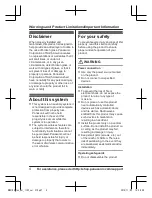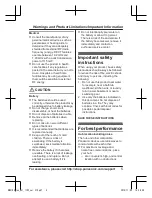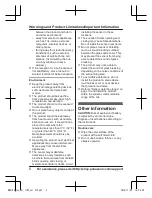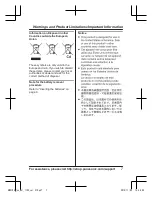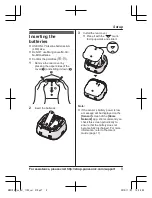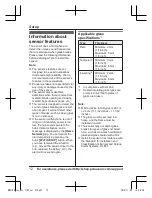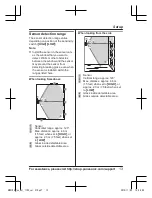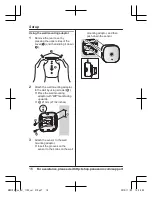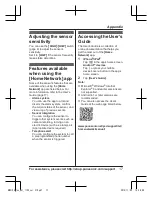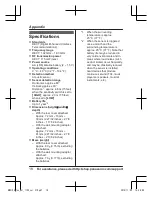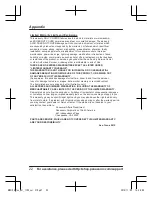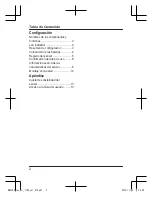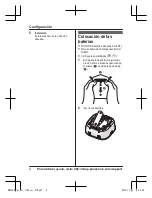
Wall mounting
There are two methods for wall
mounting the sensor. To mount the
sensor flat against the wall, use the
rear cover. To mount the sensor so that
it faces 45° to the left or right, use the
wall mounting adaptor.
Mounting examples
of the rear
cover and wall mounting adaptor
1
A
Rear cover
2
B
Wall mounting
adaptor
*1 View of looking from above.
Note:
R
Mount the sensor on the stable
location where the sensor can be
adequately supported when
mounting.
R
Do not mount the sensor on a soft
material. It may fall down, break or
cause injury.
R
Do not mount the sensor on the
following places: gypsum board,
ALC (autoclaved lightweight cellular
concrete), concrete block, plywood
less than 25.4 mm (1 inch) thick, etc.
R
Install the sensor opposite from the
window that you want to monitor for
glass breaks. Do not install the
sensor on the same wall as the
window.
R
Install the sensor such that there are
no obstacles between the sensor
and the window that may block the
sound of glass breaking.
R
Ambient noise, such as the sound of
tableware, glass, or metal objects
contacting each other, explosive
noises, children’s voices, howling of
dogs, etc., may cause false
detections. False detections may
occur when the sensor is armed if it
is installed in a kitchen, garage,
utility room, stairwell, bathroom, etc.
R
Do not install the sensor near an air
compressor, as the air pressure
generated may cause false
detections.
R
Do not install the sensor where
breezes or wind from a fan may
blow on the sensor, as this may
cause false detections or prevent
the sensor from detecting the sound
of glass breaking.
R
False detections may occur and
battery life may be drastically
reduced if devices that produce
continuous sound (TVs, music
players or speakers, musical
instruments, etc.) are located near
the sensor.
14
For assistance, please visit http://shop.panasonic.com/support
Setup
HNS104_(en_en)_1102_ver.310.pdf 14
2015/11/02 14:58:48




